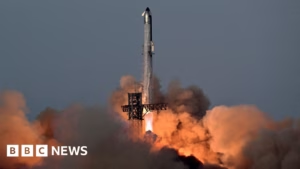
ADVERTISEMENT
SpaceX carried out a successful launch of its mega rocket Starship on Tuesday, with the deployment of its first set of eight dummy satellites into space.
The launch took place from SpaceX’s Starbase in South Texas, just after 6:30PM. After a one-hour cruise in space, the rocket made its planned splashdown in the Indian Ocean.
The Super Heavy Booster detached from the Starship upper stage three minutes post-launch and also made a successful return splashdown in the Gulf of Mexico, in the Atlantic Ocean.
Although no crew was on this demo launch, Musk’s ultimate goal is to use the spacecraft for delivering individuals and cargo to the moon, and eventually, Mars.
The billionaire has frequently stated his aim to develop a fully reusable space vehicle capable of multiple return trips without crews by 2026, with a crewed flight targeted for 2029.
Later this decade, NASA intends to use two Starships for landing astronauts on the moon.
Following several unsuccessful attempts
This mission served as the 10th test flight for the biggest and most powerful rocket in the world, breaking a streak of previous unsuccessful attempts.
The full Starship exploded on its first test flight in 2023, and again during tests in January and March. In the ninth attempt in May, the spacecraft also lost control and disintegrated.
For this mission, SpaceX redesigned the Super Heavy Booster with larger and stronger fins to improve stability.





